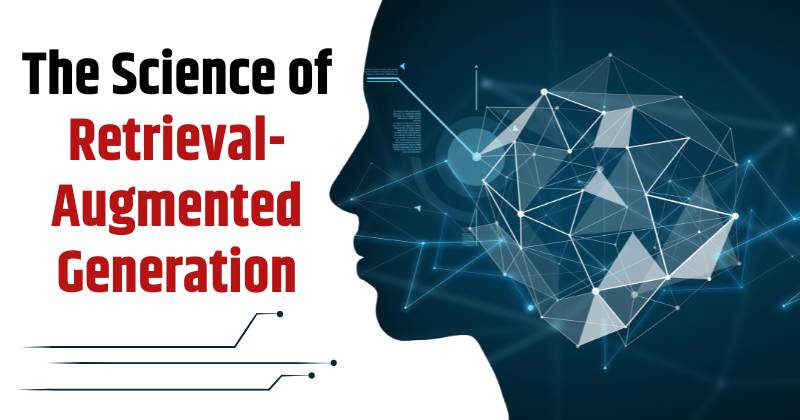In the realm of artificial intelligence, advancements in natural language processing have pushed the boundaries of what machines can accomplish with text. One such innovation that stands out is Retrieval-Augmented Generation (RAG), a groundbreaking approach that seamlessly integrates retrieval mechanisms with text generation models. This fusion of techniques has not only enhanced the quality of generated content but also unlocked new avenues for AI-human collaboration. In this article, we delve into the science behind Retrieval-Augmented Generation, exploring its mechanisms, applications, and implications for the future of AI and human creativity.
Understanding Retrieval-Augmented Generation
At its core, Retrieval-Augmented Generation combines the power of two distinct AI methodologies: retrieval-based models and generative models. Retrieval-based models excel at retrieving relevant information from vast knowledge repositories, while generative models, particularly those based on deep learning architectures like GPT (Generative Pre-trained Transformer), are adept at generating coherent and contextually relevant text. By integrating these two approaches, RAG harnesses the strengths of both paradigms to produce text that is not only fluent but also deeply informed by external knowledge sources.
Mechanisms of Retrieval-Augmented Generation
The process of Retrieval-Augmented Generation involves several key steps:
- Retrieval: Initially, the system retrieves a set of relevant passages or documents from a knowledge base based on the input query or context. This retrieval step ensures that the generated text is grounded in factual information and contextually appropriate.
- Integration: The retrieved passages are integrated into the generation process, providing the model with a rich source of external knowledge. This integration is often achieved through mechanisms such as attention mechanisms, where the model learns to focus on relevant parts of the retrieved text while generating output.
- Generation: Armed with both the input query/context and the retrieved knowledge, the model generates text that is not only fluent and coherent but also enriched with the insights gleaned from the external sources. This fusion of generative capabilities with external knowledge results in content that is both informative and contextually relevant.
Applications of Retrieval-Augmented Generation
The versatility of Retrieval-Augmented Generation has led to its adoption across various domains and applications:
- Content Creation: In content generation tasks such as writing articles, summarizing documents, or composing answers to questions, RAG enables AI systems to produce output that is well-informed and grounded in relevant information.
- Conversational AI: In chatbots and virtual assistants, RAG enhances the ability of AI systems to engage in meaningful and contextually relevant conversations by leveraging external knowledge sources.
- Question Answering: RAG models excel at answering complex questions by retrieving and synthesizing information from diverse sources, making them invaluable for tasks such as information retrieval and fact-checking.
- Creative Writing: Even in the realm of creative writing, RAG models can serve as collaborative tools for authors, assisting them in research, idea generation, and plot development while preserving the human touch in storytelling.
Implications for the Future
The advent of Retrieval-Augmented Generation heralds a new era of AI-human collaboration, where machines serve as intelligent assistants, augmenting human creativity and productivity rather than replacing it. By seamlessly integrating external knowledge sources into the text generation process, RAG not only enhances the quality and relevance of AI-generated content but also opens up exciting possibilities for interdisciplinary collaboration and innovation.
Retrieval-Augmented Generation represents a significant leap forward in the field of natural language processing, bridging the gap between AI and human creativity. By combining the strengths of retrieval-based models and generative models, RAG unlocks new capabilities in text generation, with applications spanning content creation, conversational AI, question answering, and beyond. As we continue to explore the potentials of this groundbreaking approach, one thing is clear: Retrieval-Augmented Generation is poised to reshape the landscape of AI-driven content generation and human-machine collaboration in profound ways.


